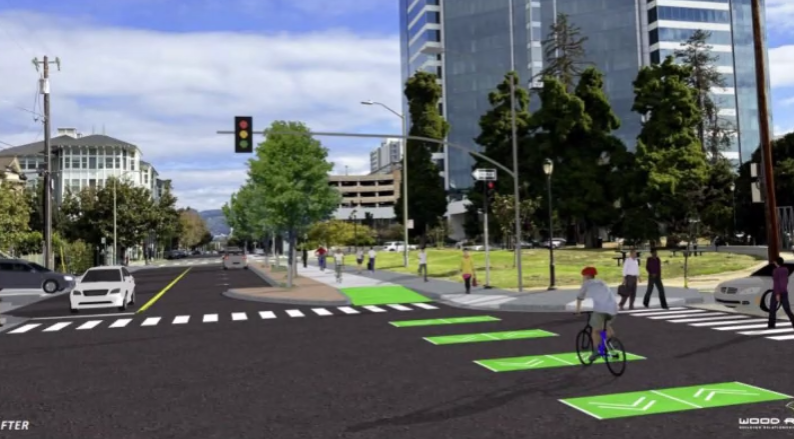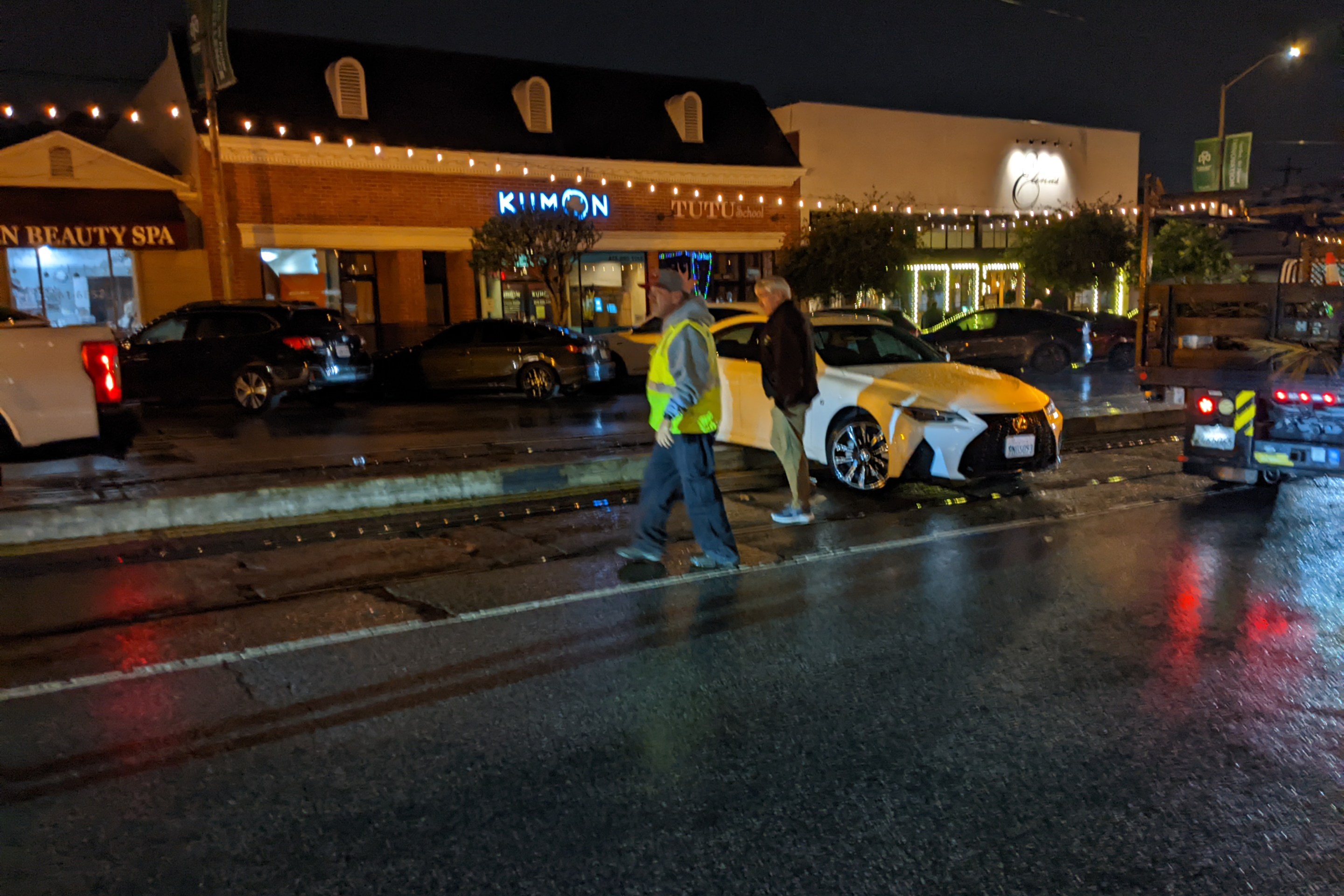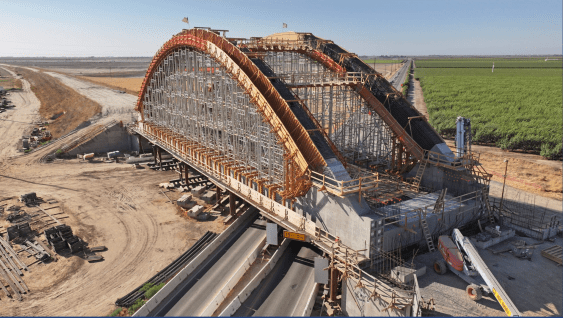Note: GJEL Accident Attorneys regularly sponsors coverage on Streetsblog San Francisco and Streetsblog California. Unless noted in the story, GJEL Accident Attorneys is not consulted for the content or editorial direction of the sponsored content.
Broadway and Martin Luther King Boulevard are set to get a safety overhaul. MLK will get a raised, two-way protected bike lane, bulb-outs, and a road diet. Broadway will get bulb-outs, extended bus-only lanes, and other improvements. During an outreach meeting Wednesday afternoon, the public got an opportunity to chime in on another aspect of the project: the color and style of the benches and light poles.
And that may be the only thing advocates can truly influence.
"We want to know if the furniture, lamps, etc., should be the same all the way, or should it vary to establish themes for different neighborhoods, such as historic, classic, and modern," explained OakDOT's Ruth Meza to the 40-some people who attended the meeting.
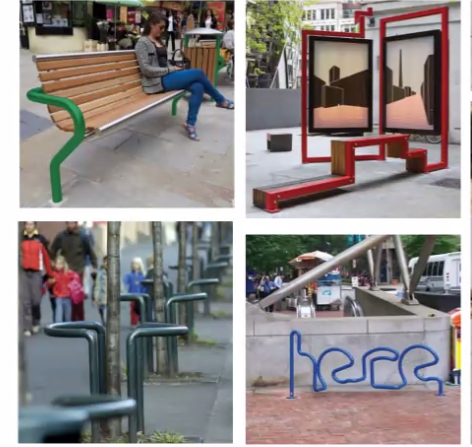
The map below shows the sections of Broadway and MLK slated for reconstruction in dashed gold:

The two projects won't start construction until 2026.
At first, only eight of the 37 people attending the meeting voted on the overarching style of the street furniture. After some prodding from OakDOT officials, that number rose to 20. Most in the audience seemed more interested in practical and safety issues than aesthetics.
Robert Prinz of Bike East Bay questioned the point of even asking the public about their preference for the style of bike rack. "Just use OakDOT's existing standards for inverted U racks or circle racks," he wrote in the chat box during the meeting. "These can be powder coated in various colors, but that should be the extent of any decoration that should be used for bike parking." This follows an ongoing argument between some planners/consultants/etc. and bike advocates, the former often preferring to get artistic and wavy with racks that aren't very good for locking up a bike. "Landscape architects are drawn like a magnet to crappy bike rack designs," wrote Prinz in a follow-up email to Streetsblog about the meeting.
Streetsblog repeated a comment made by several people during an October outreach meeting about the MLK bike lanes. The plan is to use a bi-directional, sidewalk-level cycle track on one side, as seen in the lead image and the diagram below:
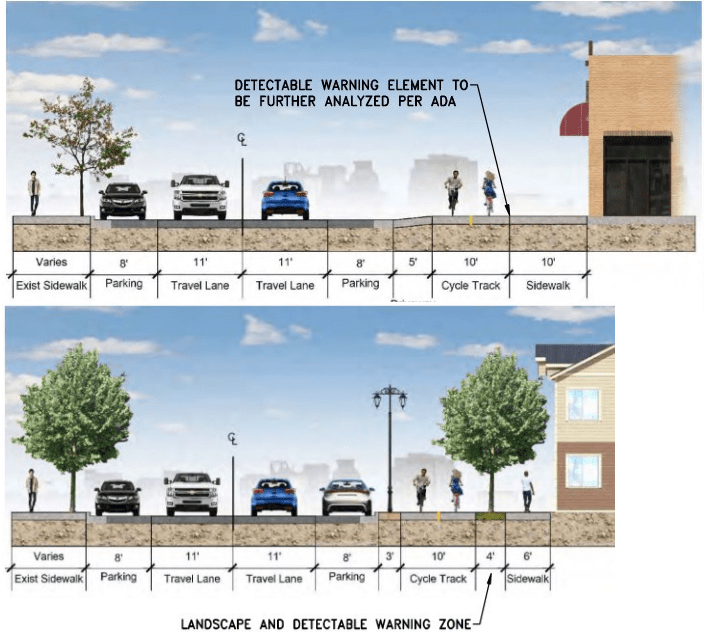
The problem is a bidirectional cycle track makes for hairy intersections and driveways since motorists aren't expecting cyclists to be coming from the left and right simultaneously. They make sense along a waterway (think of Terry Francois in San Francisco) or in a park, because there are few to no intersections. If planners are going to do a bi-directional path with lots of busy, often complex intersections along a busy street, it requires very well-thought-out, robustly protected intersections.
Instead, the plans don't have protected intersections at all, as seen below:
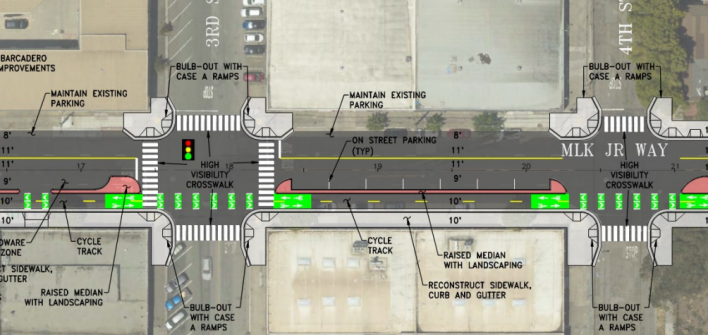
The bulb-outs will improve pedestrian safety, but protected intersections (see image below of a Dutch-style protected intersection on Walnut Street in Fremont) do the same work of narrowing pedestrian crossing distances while also protecting cyclists from turning drivers. During the October forum in Jack London Square, people brought up this issue and consultants nodded and took notes.
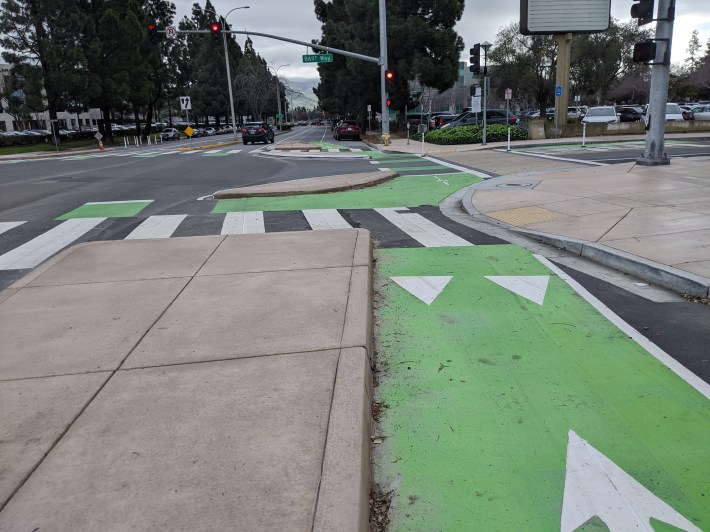
But they didn't change anything. An official on the project responded during Wednesday's meeting that "the two-way cycle track at the sidewalk level can provide a more comfortable, family/social friendly and welcoming environment for people who chose to bike."
Officials claimed that those polled at the start of the project preferred the two-way design over raised, protected bike lanes on both sides of the street.
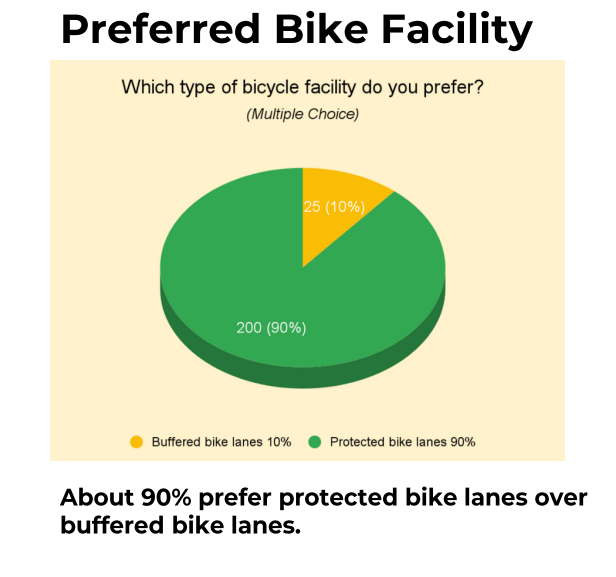
Earlier documents, including the above pie chart from the "engagement" in the summer of 2023, show otherwise (Streetsblog emailed and texted an OakDOT official for comment). The choice presented to the public was between painted bike lanes and protected bike lanes, not a bidirectional on one side versus protected bike lanes on both sides.
Streetsblog readers get it: a road diet is hard enough to sell. As Streetsblog confirmed during the October meeting, the city and/or its consultants didn't want to also sacrifice large amounts of street parking needed for protected bike lanes on both sides of the street.
Meanwhile, bulbouts are intended to "enforce" a speed limit of 20 mph. And Nicole Ferrara, also with OakDOT, said Broadway is a contender for the installation of the state's recently approved speed cameras.
From Streetsblog's view, road diets, bus lanes, and protected bike lane projects are great. But the whole outreach process, as usual, feels like a sham: designs were mostly locked (except for decorations) by political considerations. Thank goodness there are people at Oakland DOT who bike and prioritized safety in the designs before outreach began, at least to the extent they can. That's demonstrated in one of the best aspects of this project: the elimination of a deadly slip turn (see the right turn from 6th to Broadway in the adjacent image, where the slip turn is replaced with a giant bulb out).
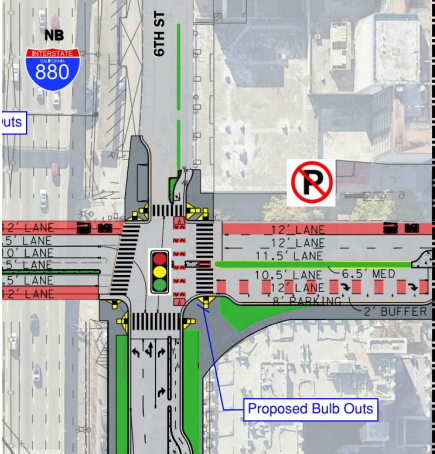
But the politics of parking and automobile dominance still prevents Oakland from going 100 percent for safety, even on funded, multi-million dollar projects. Yes, Broadway and MLK will be tangibly safer when this project is complete. Nevertheless, someday someone will be seriously injured or killed by a turning driver thanks to the bidirectional bikeways and badly designed intersections on MLK. That is unless the designs are updated.
When measured against that, it's really hard to give a cr#p about the style of the lampposts.
